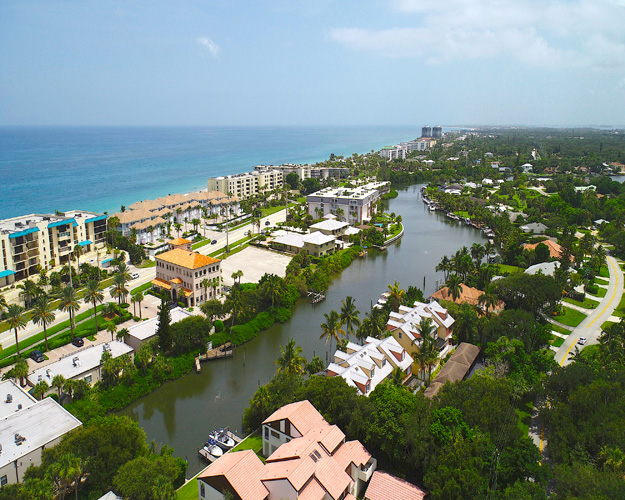
Scientists from Florida Institute of Technology are undertaking a sophisticated computer-model study based on data collected in Bethel Creek to see if the stagnant inlet on the Indian River Lagoon can be cleaned up by flushing it with ocean water.
The university was awarded $800,000 by the state legislature for the first phase of the project, which will study the Vero Beach creek – which starts near the Village Market on the barrier island and curves through residential neighborhoods to open into the lagoon near the Vero Beach Municipal Marina – as well as two sites in the Banana River.
Indian River County Commissioner Tim Zorc – who has led the charge to clean the murky, dead-end Bethel Creek – celebrated the announcement as an important step forward in cleaning up the lagoon, which has been plagued with nutrient pollution, algae blooms, marine mammal deaths and seagrass losses.
When Zorc ran for the commission the first time in 2012, ridding Bethel Creek of its stale water by opening some type of connection with the ocean was a prominent part of his platform.
Now, he is optimistic scientists will conclude that installing a series of pumps and pipes to flush Bethel Creek with ocean water will work like it did in Destin in Florida’s Panhandle, where the city’s filthy, ecologically damaged harbor was brought back to life.
Pumps were used continuously in Destin until the harbor was cleaned; now the system is used only when water quality worsens.
Talks about how to clean the creek ramped up in 2017 after a sewage main along State Road A1A burst, dumpling roughly 3 million gallons of raw sewage into the creek.
The city installed a series of aerators to speed up decomposition of the human waste but that action did not address the basic problem in the creek and the lagoon in Vero Beach in general.
Because Vero is midway between the Fort Pierce and Sebastian Inlets, more than 15 miles from any source of fresh ocean water, tidal flushing and currents are minimal. Dirty water in Bethel Creek and between the Vero bridges exchanges very slowly, and the creek stank for months after the sewage spill.
“My goal all along has been to improve the water quality, which then helps to increase the amount of light that gets to the seagrass, which then improves all the different species that live in that water habitat area,” Zorc said. “I think flushing can really bring that area back to life.”
The first phase of the study – already underway at Bethel Creek – involves gathering data on water quality, biological parameters and hydrologic conditions. The data will be used in a computer model where dye that moves with the currents will be introduced to determine if a permanent or temporary flushing device could provide a potential ecological cure for the area.
“The model in the numerical world mimics the real world to the best of our ability,” said Gary Zarillo, a professor of oceanography at Florida Tech and one of the principal investigators for the project. “It’s like when you get your weather prediction everyday – that’s not actual data – it’s based on models and statistics. Usually the weather predictions are pretty accurate.”
Phase one of the project is expected to conclude in June. The data collected by the university’s team of six scientists and biologists will be distributed to the state, county and public, Zarillo said. If it is convincing and more funding is available, the goal will be to proceed with flushing.
Longer term, the hope is that improving water quality in places like Bethel Creek will lead to ecological restoration throughout the lagoon.



